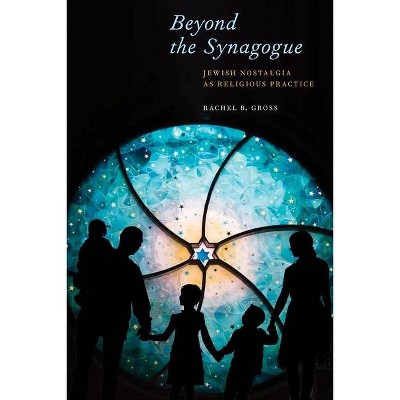The Production of American Religious Freedom - (North American Religions) by Finbarr Curtis (Paperback)

Similar Products
Products of same category from the store
AllProduct info
<p/><br></br><p><b> Book Synopsis </b></p></br></br><p>Americans love religious freedom. Few agree, however, about what they mean by either "religion" or "freedom." Rather than resolve these debates, Finbarr Curtis argues that there is no such thing as religious freedom. Lacking any consistent content, religious freedom is a shifting and malleable rhetoric employed for a variety of purposes. While Americans often think of freedom as the right to be left alone, the free exercise of religion works to produce, challenge, distribute, and regulate different forms of social power. <p/>The book traces shifts in the notion of religious freedom in America from The Second Great Awakening, to the fiction of Louisa May Alcott and the films of D.W. Griffith, through William Jennings Bryan and the Scopes Trial, and up to debates over the Tea Party to illuminate how Protestants have imagined individual and national forms of identity. A chapter on Al Smith considers how the first Catholic presidential nominee of a major party challenged Protestant views about the separation of church and state. Moving later in the twentieth century, the book analyzes Malcolm X's more sweeping rejection of Christian freedom in favor of radical forms of revolutionary change. The final chapters examine how contemporary controversies over intelligent design and the claims of corporations to exercise religion are at the forefront of efforts to shift regulatory power away from the state and toward private institutions like families, churches, and corporations. The volume argues that religious freedom is produced within competing visions of governance in a self-governing nation.</p><p/><br></br><p><b> Review Quotes </b></p></br></br><br>A bold, surprising, and timely intervention into ongoing debates about the political and ethical dimensions of secularism. . . . Curtis offers a revisionist history that challenges easy readings of American identity and progress and those scholarly paradigms that have made such readings so convenient. Through a series of case studies that span the last two centuries of American life, Curtis demonstrates that religious freedom is a messy business, a tangled skein of sweat and blood as well as malleable concept with viral propensities. In his deft and richly told tale, religious freedom is both the hinge of affective discipline of the nation-state and the grounds for ethnic, racial, and gendered forms of collective identity within; religious freedom is both the modus operandi of whiteness as well as the source of its potential undoing. The Production of American Religious Freedom is an exceptional and elegantly conceived project. It will change the way in which scholars of American religion and politics approach the concept of religion, in general, and where and how they locate it within history.--John Modern, Franklin & Marshall College<br><br>Ambitious, and laudably so. In fact, I found myself wondering if the book ought to have been titled The Religious Production of American Freedominstead ofThe Production of American Religious Freedom, since it seems that Curtis wants ultimately to make broader and farther-reaching claims about the views Americans have historically held about their own choices in the political, social, economic, and religious realms.-- "Politics and Religion"<br><br>At a moment when scholars of religion are rethinking their contribution to public debate, Finbarr CurtissThe Production of American Religious Freedom exemplifies the power of sustained academic engagement with the assumptions and histories that shape our fractious condition and toxic discourse...Learned, provocative, and interdisciplinary in the best sense, this book is an archaeology of conceptual confusion and a model for new conversations that might deepen our understandings of American religion and public life, historically and at present.--Jason C. Bivins, North Carolina State University<br><br>Curtis work is valuable, spurring readers to interrogate the meaning and application of freedom and its relation to justice. It is also timely, helpfully framing many of the issues pertinent to our times regarding how Americans understand the tradition of religious freedom in daily life. This book benefits historians and laypersons alike as we grapple with what we mean when we claim we are religiously free.-- "The Journal of Church and State"<br><br>Each chapter, without exception, presents intriguing and provocative insights, raising questions of race (Griffith, Malcolm X), gender (Alcott, Hobby Lobby), science (Bryan, Intelligent Design), and religion more narrowly and institutionally understood (Finney, Smith). Scholars interested in the broad interconnections between the religious and the political particularly scholars with capacious definitions of those two terms will find food for thought throughout.-- "Politics and Religion"<br><br>For all its historical breadth, the book feels extraordinarily timely for our current political moment. The case studies are ripe for use in the undergraduate classroom individually and graduate students would be well served to engage Curtis's sweeping genealogy of "religious freedom." Specialists in American religion, religion and politics, or secular studies will find the book well worth their time.--Religious Studies Review<br><br>Offers a nuanced understanding of religious freedom.-- "Choice"<br><br>The Production of American Religious Freedomreadslike a collection of meditations on important themes in American religious history that serve as case studies for conceptual problems in the study of religion.-- "Reading Religion"<br><p/><br></br><p><b> About the Author </b></p></br></br><p><b>Finbarr Curtis</b> is Associate Professor of Religious Studies at Georgia Southern University. He is the author of <i>The Production of American<br>Religious Freedom</i> (NYU Press, 2016).</p>
Price History
Price Archive shows prices from various stores, lets you see history and find the cheapest. There is no actual sale on the website. For all support, inquiry and suggestion messages communication@pricearchive.us



















